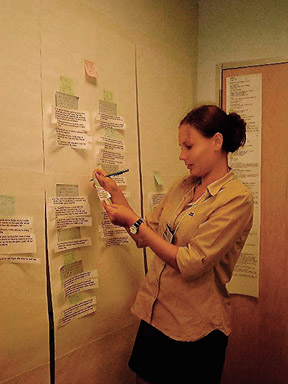Messenger
|
|
We used contextual inquiry and other qualitative contextual research methods in cultural end-user research and in direct support of concept creation. As the example from India shows, the results from these studies can be very versatile. They illuminate
-
Practical requirements that arise from environmental circumstances
-
The cultural values relative to specific product categories
-
The products' socially and economically shaped roles in consumption
-
The concepts of privacy and trust in different group structures
-
The rules of socializing, such as allocation of responsibilities in a discussion
-
The perception of time and space
-
The idiosyncrasies of language
The results have been felt, heard, smelled, and seen. The places have been visited and the people met. This firsthand experience creates excellent preconditions for design. Context knowledge directly suggests product improvements, and provides an easy way of assessing the relevance of ideas from other sources. The bottleneck in contextual research arises from failure to communicate the results to people who haven't been involved in the actual research. The research team must ensure that the right people in product creation get the right results. As the scope of findings is very wide, the ones who are able to utilize them are spread around the organization. Further, designing based on the data requires very good and very accessible documentation and presentations. But standard written research reports can hardly mediate the experiences, subtle impressions, and emotional commitment to the end users' desires and demands that the research team has faced personally. Text can be enlivened with quotations, images, videos, charts, and other means, but that path gives out fairly quickly. Common workshops with designers and other stakeholders who need the information are a more fruitful way of communicating the data and the design imperatives implied by these data.

The author organizing observation results.
From the researchers' point of view, this means that the project doesn't wrap up on the day the report is submitted to the company database. The researcher stays for a while as a living representative of the people and the culture where she or he has been. The researcher in effect becomes the messenger.
|
|
EAN: 2147483647
Pages: 142